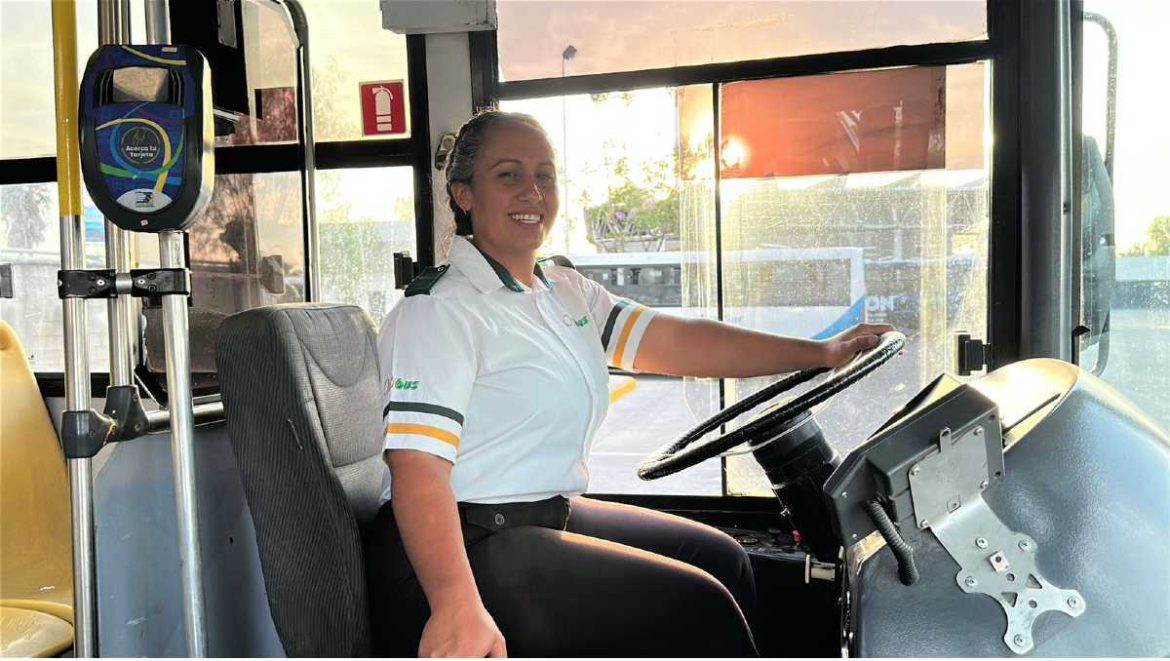The road freight transport sector in Spain is undergoing a transformation driven by digitalization and sustainability. In this context, the question of whether women are prepared to drive large trucks is more relevant than ever. An analysis of their training, technological skills, and the reality of the sector reveals a landscape of growing capability that clashes with persistent barriers.
Spanish women are not only qualified, but they also demonstrate outstanding academic performance at all educational levels. The Ministry of Education reports that the rate of women obtaining the Higher Technician title (37 percent) clearly exceeds that of men (33.4 percent). This data is crucial, as Higher Vocational Training is a fundamental pathway to specialized training in transport and logistics. Furthermore, Spain almost doubles the average of the Organisation for Economic Co-operation and Development (OECD) and the European Union in the enrollment of young people aged 15 to 19 in Higher Vocational Training or university studies, with a rate of 20 percent compared to the international 11 percent. This indicates that the training foundation of young women is exceptionally solid.
However, this general preparation is not translated equitably into all technical fields. Gender segregation persists in the professional branches of Higher Vocational Training: areas such as Personal Image, Healthcare, and Sociocultural Services concentrate the majority of female students, while those related to vehicle maintenance, such as Mechanical Manufacturing, Installation and Maintenance, have low female presence. This disparity suggests that the “taste for mechanics,” traditionally associated with men, remains a territory to be conquered, possibly due to cultural and educational biases that discourage female technical vocations from an early age.
The digital transformation of transport plays in women’s favor. The sector is reinventing itself with the implementation of Artificial Intelligence, the Internet of Things, and telematics to optimize routes and manage fleets. Women, who constitute 54 percent of the student population in higher education in Spain, are well-positioned to lead this transition. Their high rate of graduation from higher education provides them with a solid foundation for acquiring the advanced digital skills that are already an indispensable requirement for operating the smart trucks and logistical systems of the immediate future.
The sector not only imposes technical requirements but also an ever-evolving regulatory framework. The new rules focus on sustainability, with increasing mandates for zero-emission trucks and the use of alternative fuels like HVO, or renewable diesel. Furthermore, the shortage of drivers at a European level is driving strategies to improve working conditions and attract talent. While regulatory debates, such as the one that occurred in the United States about the English requirement for truckers, are not the focus in Spain, adaptation to environmental regulations and the improvement of working conditions are global challenges that offer an opportunity to rethink the sector and incorporate a gender perspective.
Here a Spanish paradox arises: women academically outperform men, but they face persistent barriers in the transport labor market. Even with higher education, the female employment rate is five points lower than the male rate (81.9 percent compared to 87 percent). The wage gap is ten points across all educational levels. Nevertheless, a considerable number of women are already owners and managers of teams of truckers, demonstrating a deep knowledge of the sector from management and leadership roles. Their presence in the ownership and administration of transport companies is a silent testimony to their capability, although their visibility in the driving role remains low.
In 2025, we can affirm that Spanish women are more than capable of driving large trucks from an educational and technological standpoint. The educational system provides them with the tools; the digital transformation of the sector, an opportunity. The obstacle is not ability, but a web of cultural inertia, training segregation, and labor realities that hinder their massive incorporation into the cab. The path towards total equity is still long, but the growing presence of women at the wheel and, above all, in the management of companies, heralds an unstoppable change that society and the sector cannot ignore. The ecological and digital transition will be the litmus test for consolidating this progress.
Have any thoughts?
Share your reaction or leave a quick response — we’d love to hear what you think!





